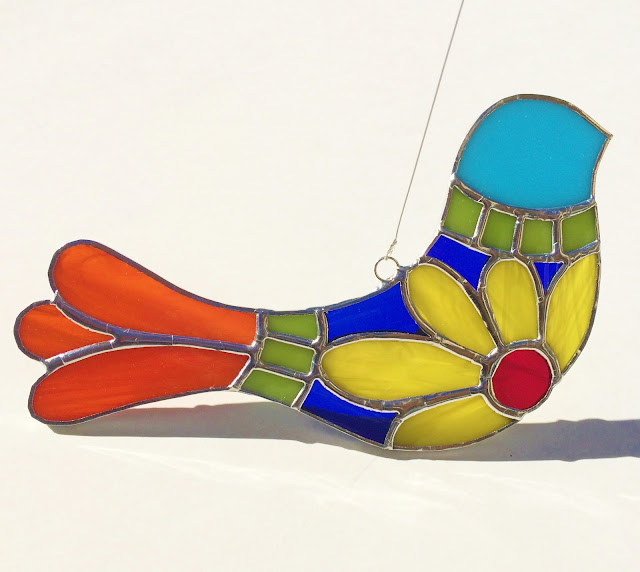This is what happens to a beautiful window when it's poorly stored and badly treated over the years. 13 windows were salvaged by a local designer and brought to me for restoration. 8 of the 13 are being restored and installed in a home office divider wall. These panels had paint, dirt, tape glue, some sort of epoxy and several other types of corrosion on them. Was it worth the time and money? Yes!

Panel restoration is one of the most rewarding and exciting projects to take on. A job like this is very tedious and meticulous, but envisioning the final product is what inspires an artist (and designer) to take on a job like this. The first step was to cut the frame, so I could access the glass, using a rotary tool with a cut off wheel to get a clean cut on both sides of the came. The broken glass is indicated by the black sharpie line marks. I sourced glass pieces from some of the other panels that were not being used, and used new era glass that matched the aesthetic of the vintage glass. I scraped out the cement/putty, and replaced the glass. I used a rotary tool with a sanding bit to prepare the zinc for soldering. Once the panels were soldered in I washed the panels in a basin with a mild detergent and soft brush.

The next phase was to deep clean the glass. Hand held steam cleaners are helpful to work some of the debris out of the deep glass pores, but it's not always successful. I scraped off the paint and epoxy splatter using a flat razor blade, and on the porous side, I used lacquer thinner with a Q-tip. I followed up with a melamine sponge ("Magic Eraser"). I went over each panel and removed any other debris with a craft/hobby knife ("Exacto Blade"). I followed up with the cementing/puttying process, polished and let them cure. Yes, this is an arduous process and takes hours of commitment and focus.

The zinc came work was highly oxidized. I used steel wool and a rotary tool with abrasive buffing wheels to remove the oxidation. Then followed up with Birchwood Casey E & F Super Blue Liquid Gun Blue and Rutland Products Grill Liquid Stove Polish. This polish (I preferred the liquid over the paste) restored the zinc, filled any oxidation pores and gave it a dark bronze tone with a nice shine. I used Q-tips to apply, let it dry, then buffed with a clean microfiber cloth. This polish will dry onto the glass and it takes some effort to remove. Any residual polish on the glass can be removed right away, or if it dries on to the glass, scrape it off with a razor blade. If it dries on to glass that is porous, dip a Q-Tip in mineral oil (in a highly ventilated area) and go over the polish until it is removed.

The bottom corners have beautiful detail with a frosted square that had imbedded dirt in the micro pores. Mineral spirits and lacquer thinner cleaned it, but it wasn't perfect, so re-frosted the glass with an
Armour Etch glass acid etching cream. This made the pieces look new, which was rewarding as most vintage and antique glass never cleans up to a "new" look.
The final product of 8 repaired and restored vintage stained glass panels was completed in 2 months. So far they have not been installed by the contractor, but if I get a chance to see the final home project, I'll post a photo.



























